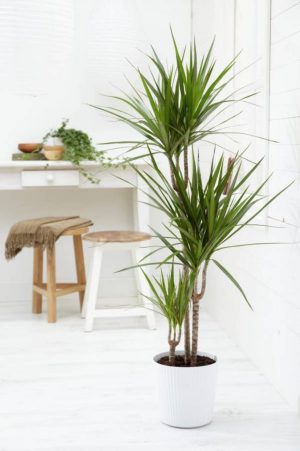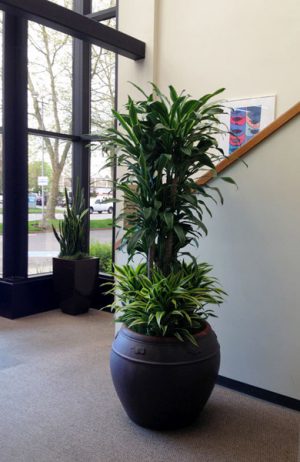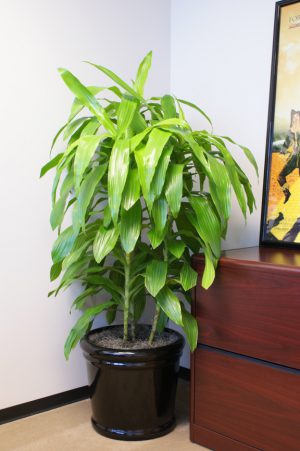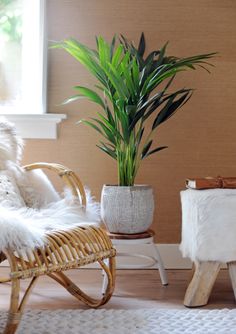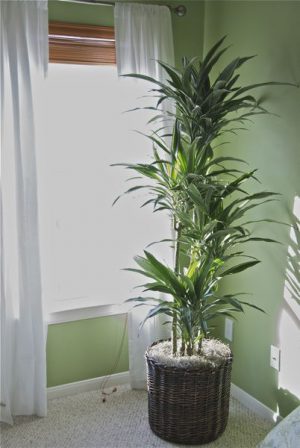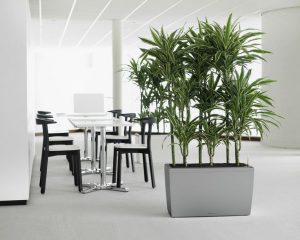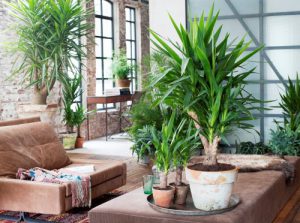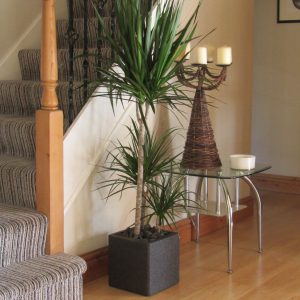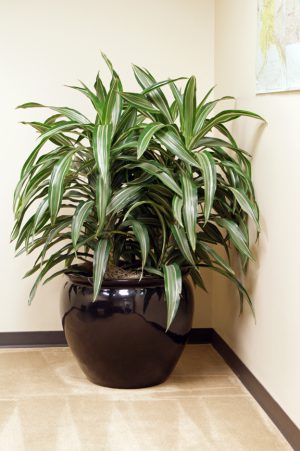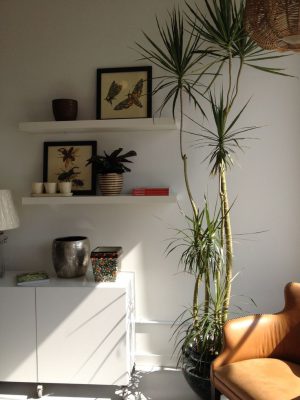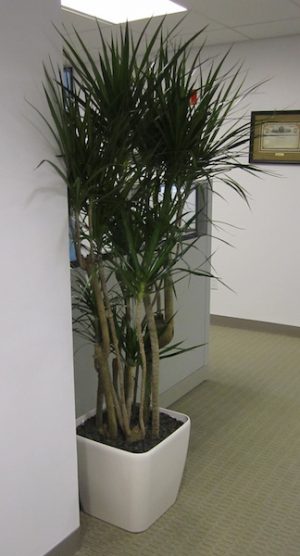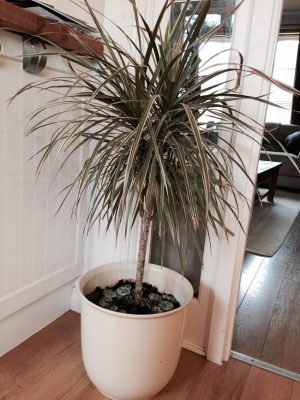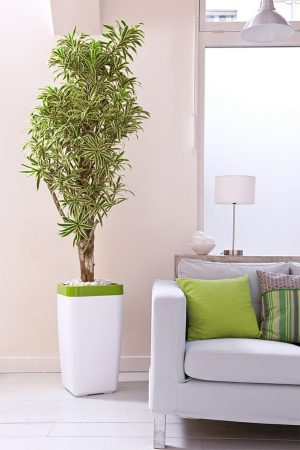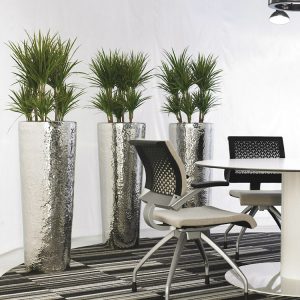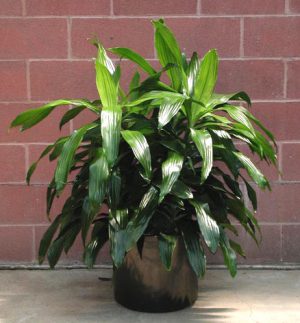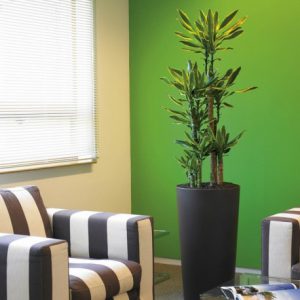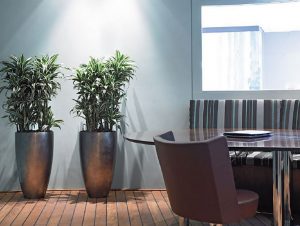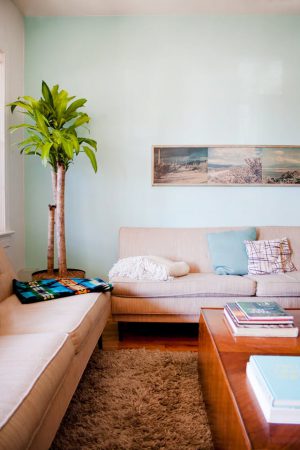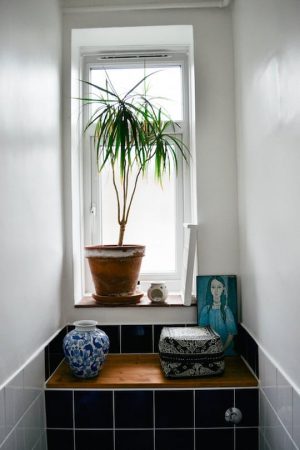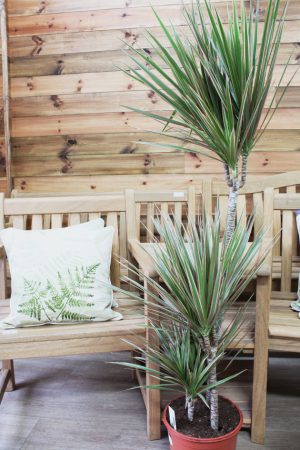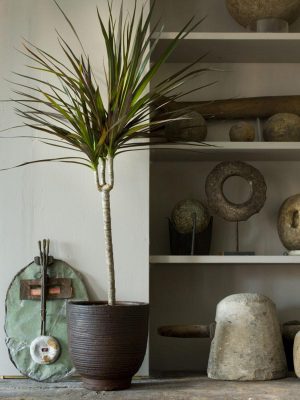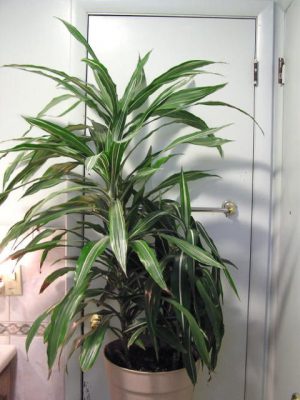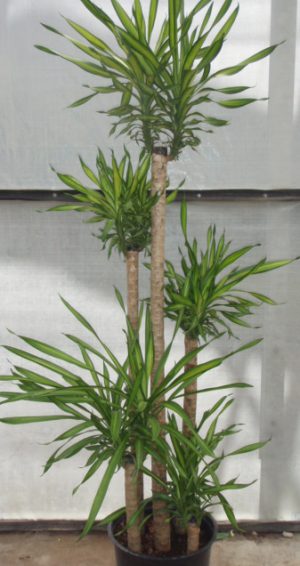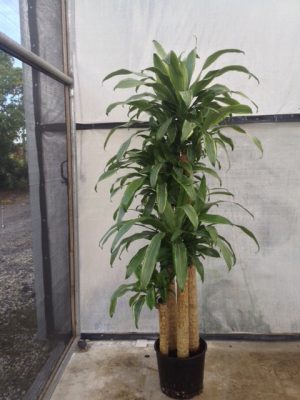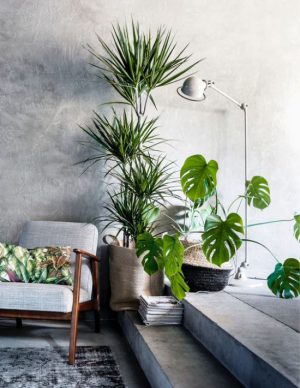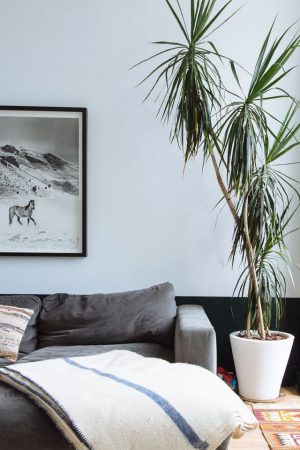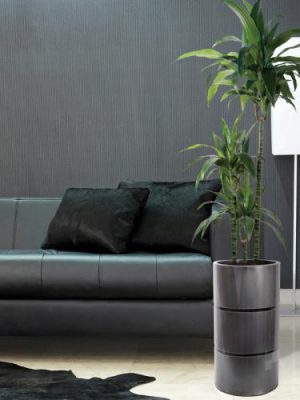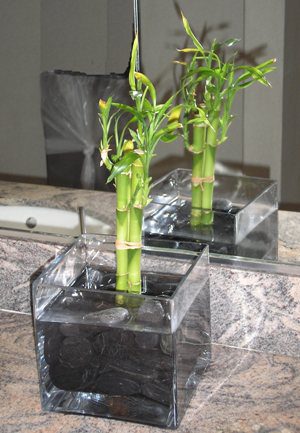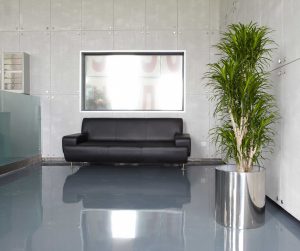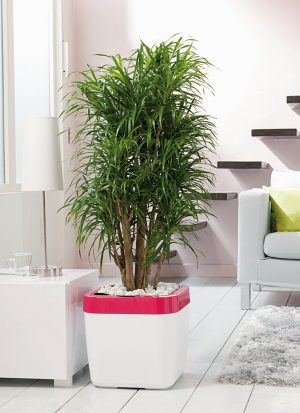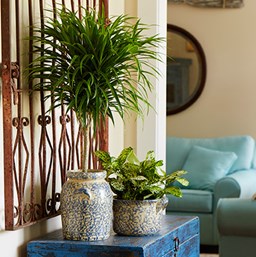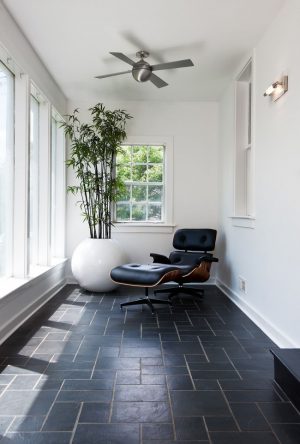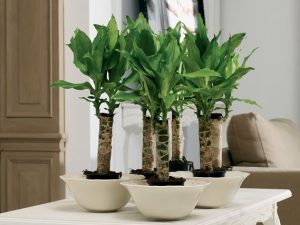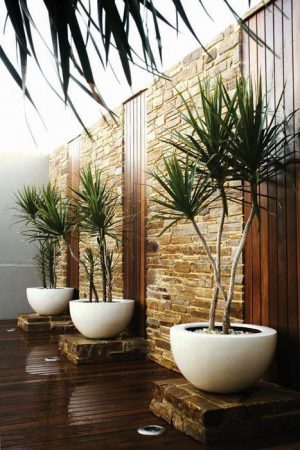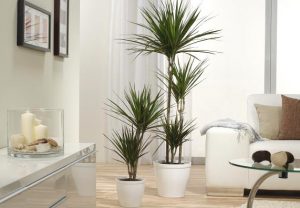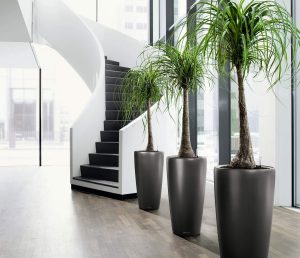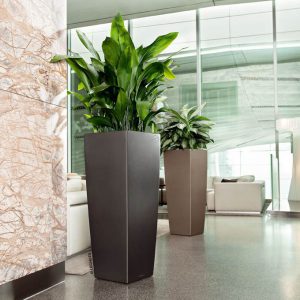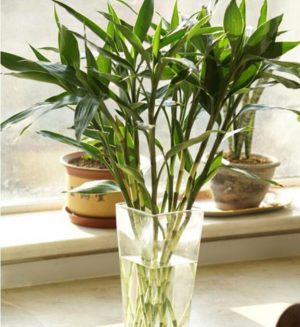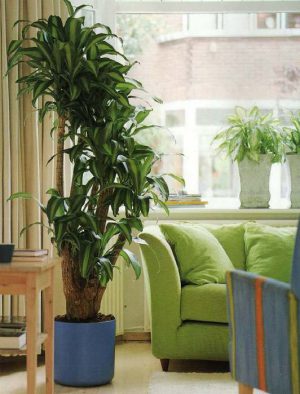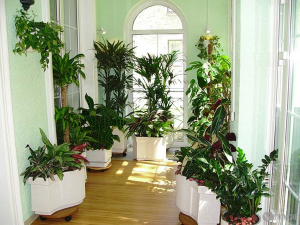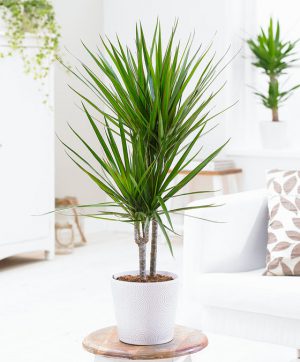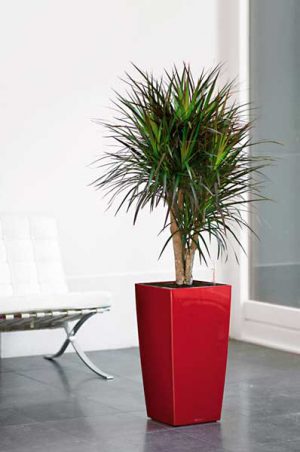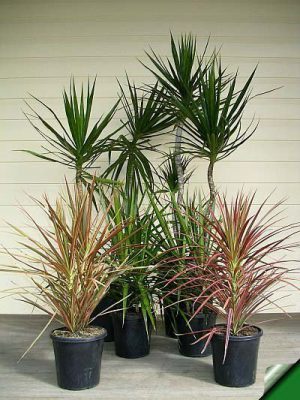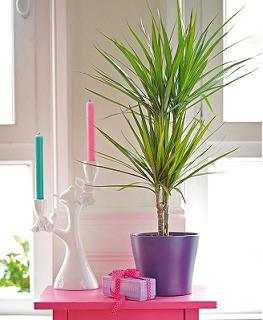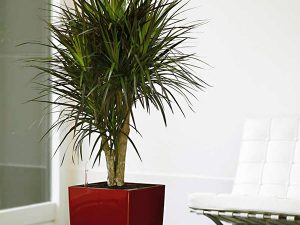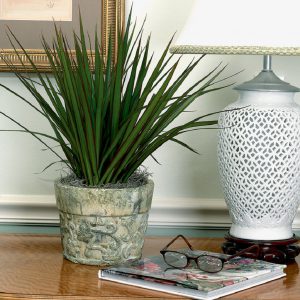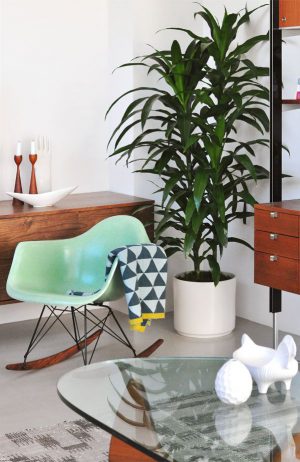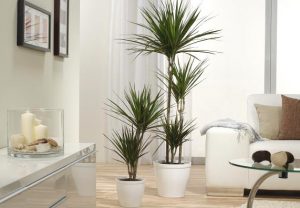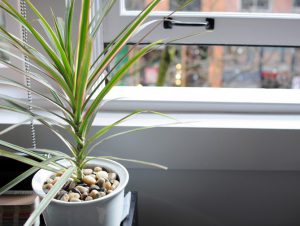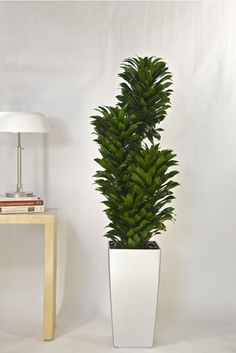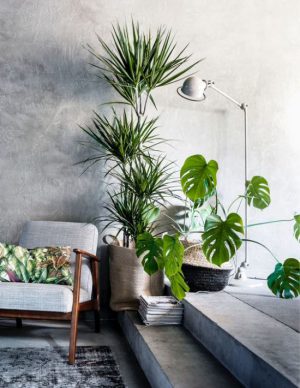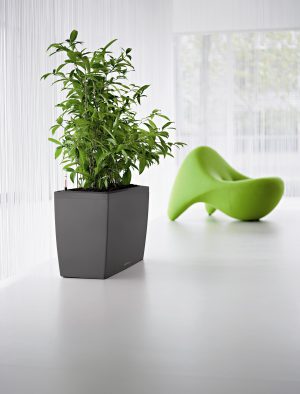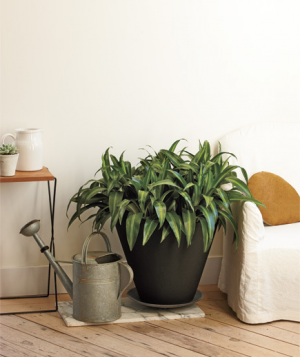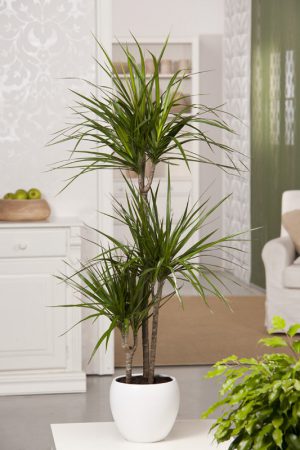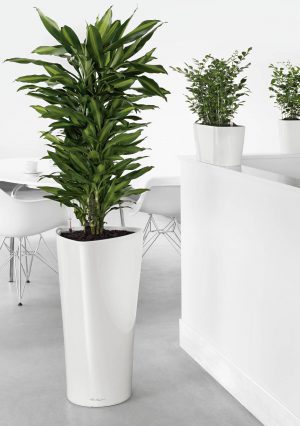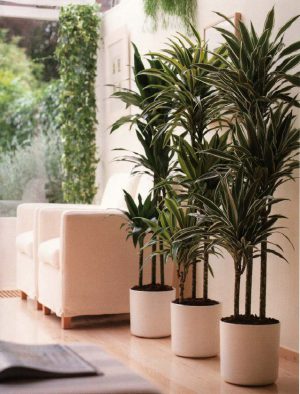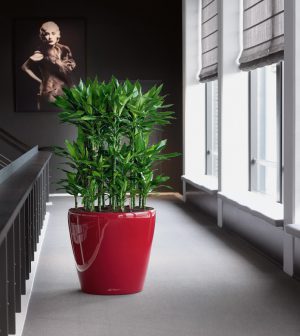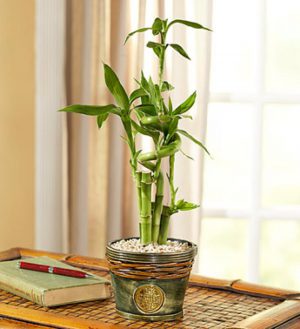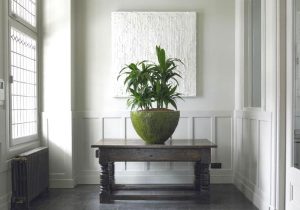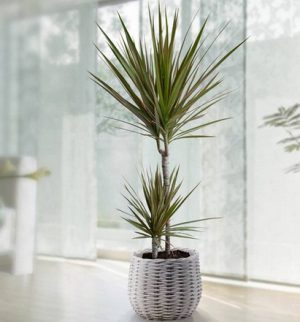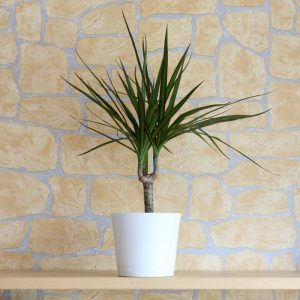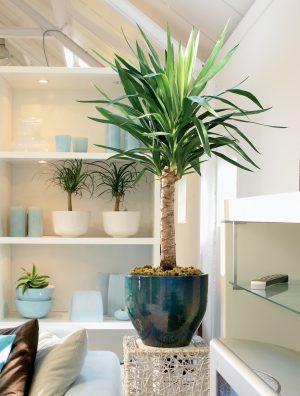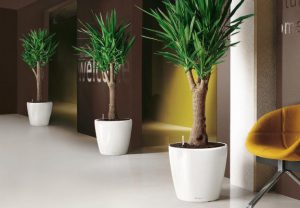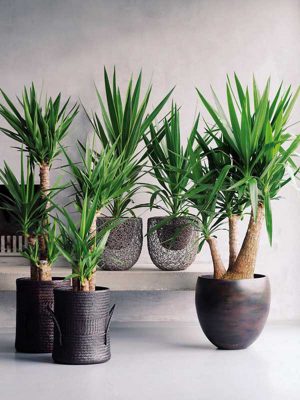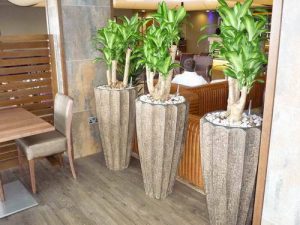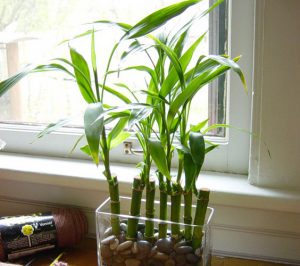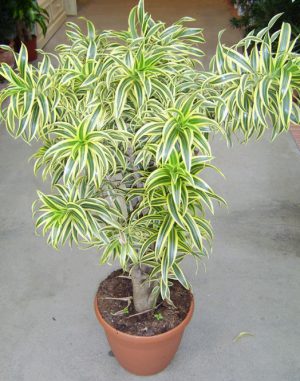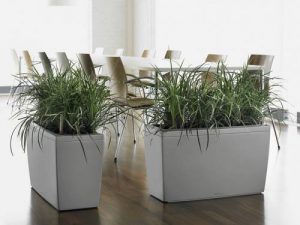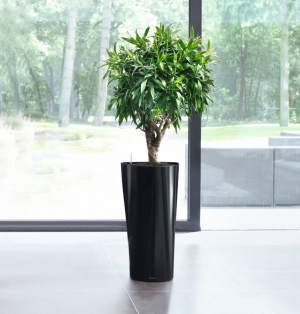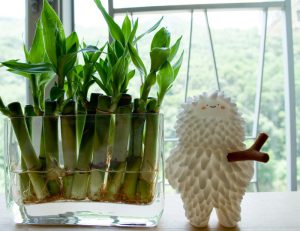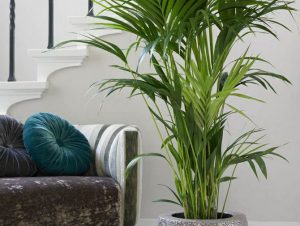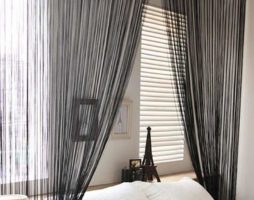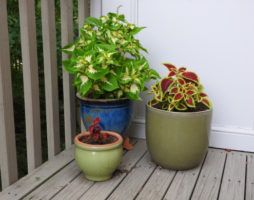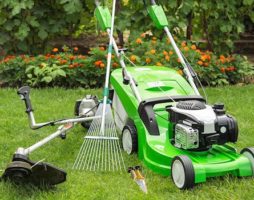Dracaena is a tropical plant of an unusual species, whose homeland is Africa. Due to its ability to harmoniously fit into the atmosphere of apartments and the interior of office premises, it has become widespread in Russia.
Dracaena is a shrub consisting of leaves arranged on straight stems. Stems degenerate into woody tissue with age and become a trunk. The height of the plant directly depends on the age of the plant: a young perennial with a height of 30 cm grows over the years into a plant whose height reaches several meters.
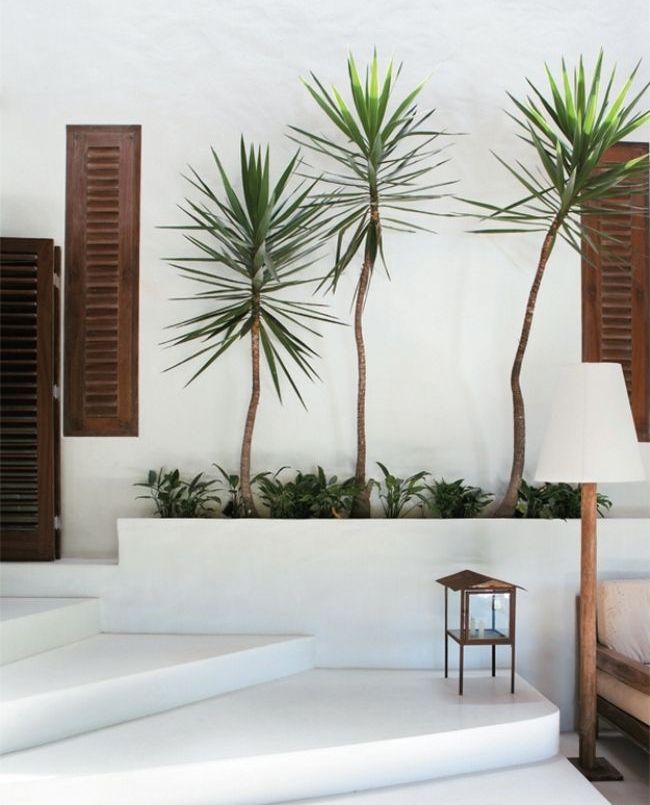
Dracaena
The leaves of the plant are painted in a rich green color, have an elongated shape, can measure from 15 to 70 cm.
With proper care at home, perennials can live up to 15 years. This unpretentious plant does not require special attention.
plant varieties
At home, about 40 varieties of perennials are grown.
Most popular:
Fragrant. An unpretentious plant with a thick trunk, on which buds first appear, and then new shoots grow from them. Perennial leaves are wide, with slightly wavy edges, each of which can grow up to 10 cm wide and up to 80 cm long.
Leaf color: green, but the leaves of some varieties of dracaena may be painted in a different color. The height of plants grown at home does not exceed 250 cm.
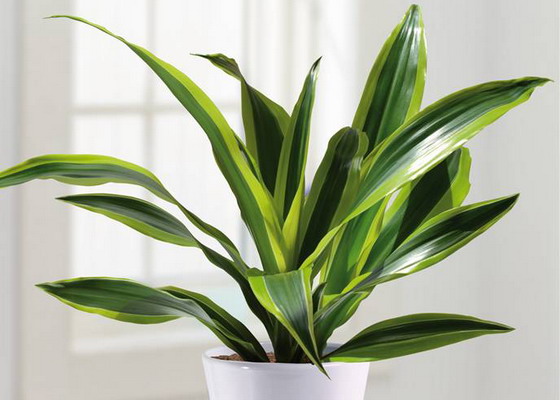
Dracaena fragrant
Deremskaya. The characteristic features of this type of dracaena are: wide leaves of the original color: white stripes appear on a rich green background.
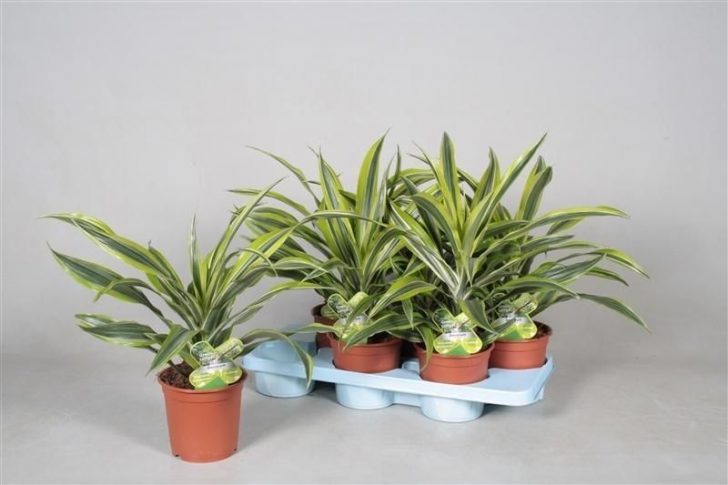
Dracaena deremskaya
marginata, also known as recurved or bordered. Perennial with narrow long leaves, native to the island
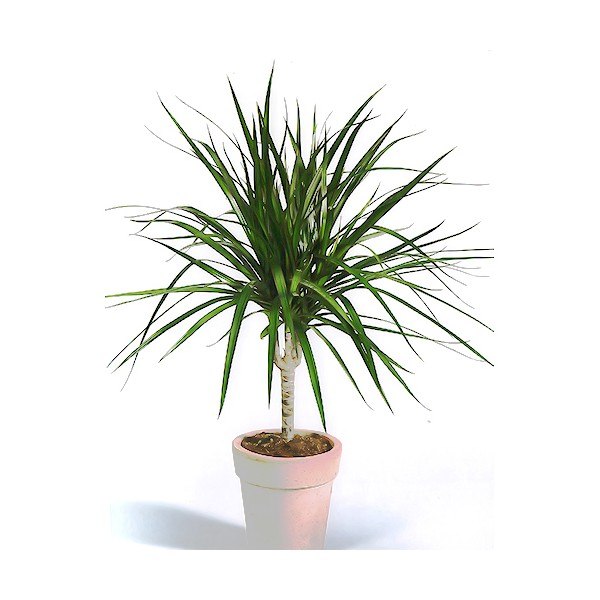
Dracaena marginata
Madagascar. The plant can grow up to 3 meters in height, the trunk is lignified, thick, almost without branches. The leaves can be up to 80 cm long and only 2 cm wide. Their ends are pointed, the leaves themselves are dark green, sometimes with red, brown or yellow stripes along the edges; dense, hard, with a glossy finish. For growing at home, this particular type of dracaena is chosen.
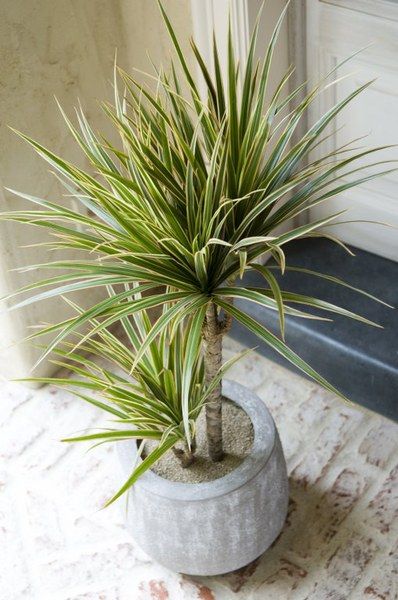
Dracaena madagascar
Godsefa. A plant of this species is difficult to confuse with others: it has an oval leaf shape, and the shape of a perennial is bushy. The leaves have an unusual color - beige and golden dots appear on them. Godsefa attracts the eye, looks original and bright, does not bloom.
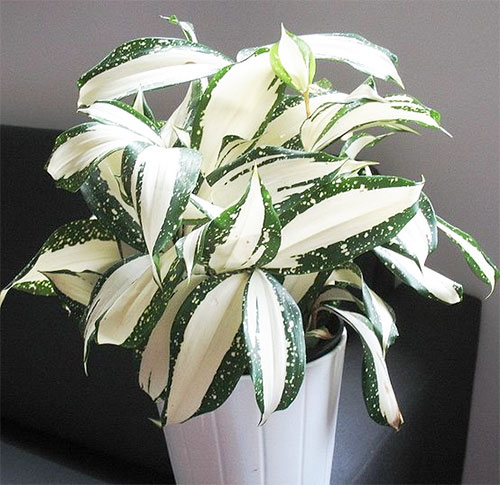
godsefa dracaena
Sander. Due to the similarity of seedlings with bunches of bamboo, this type of perennial has a second name - "Happy Bamboo". An adult plant is much smaller than other varieties - its maximum height is about 1 meter. The shoots are covered with multi-colored or light green leaves, each is almost 25 cm long. In order for the dracaena to have an unusual appearance, after the cutting is planted in a permanent place, it is twisted in a spiral or woven from several braids.
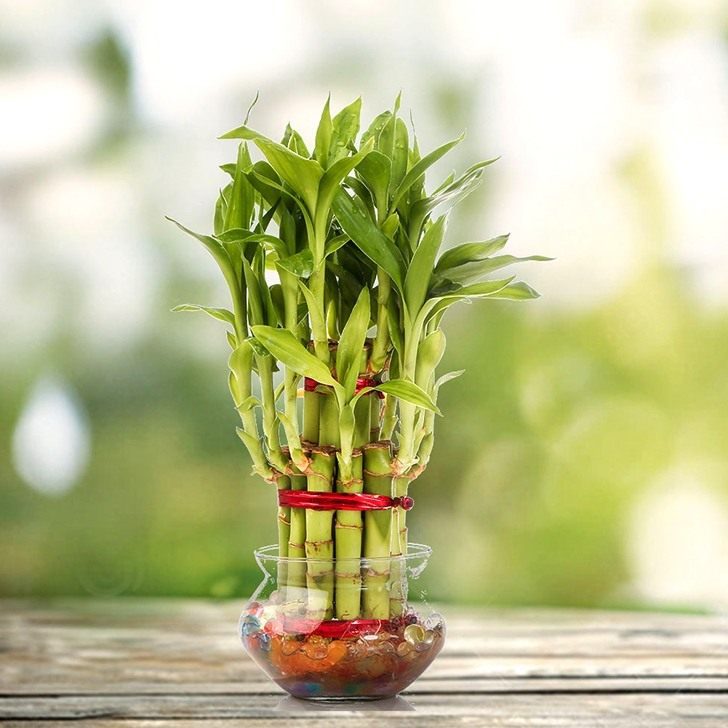
sandera dracaena
Bent. From the very root, the stems of the plant begin to branch, and the wide leaves with a golden border are tilted down, their edges are slightly bent.
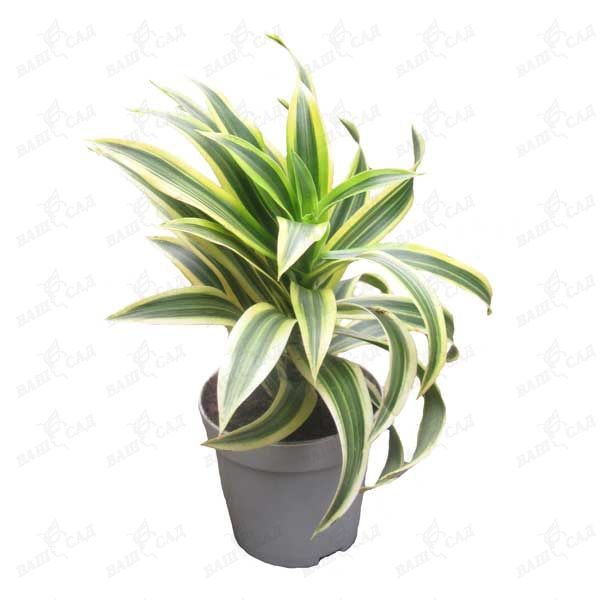
Dracaena recurved
The Dragon. Under natural conditions, it can grow up to 20 m, but indoors it does not exceed 1.5 m. The popular name for this variety of dracaena is “False Palm”. It has a straight stem, on which there are xiphoid leaves, along the edges of which there is a red border.

dracaena dragon
Other plant varieties can also be grown in the apartment: Golden, Golovchata, Hooker and others.
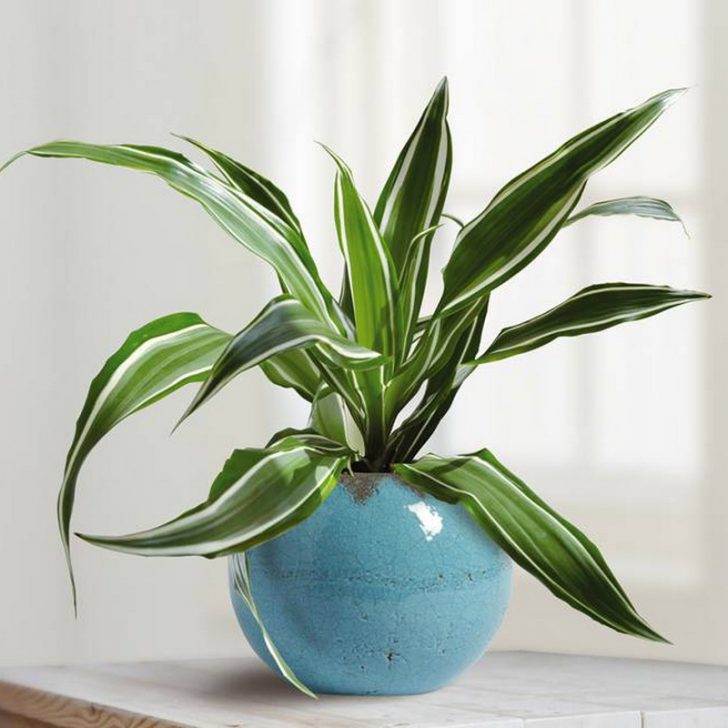
Dracaena Hooker
Attractive appearance is preserved only in healthy perennials. As soon as the plant begins to dry out, its leaves become deformed, it is not properly cared for, or if insects settle on the dracaena, it fades, and it can no longer be called beautiful. Before you decide to buy this perennial, you should find out the rules for keeping the plant and caring for it. Despite the fact that dracaena is considered an undemanding plant, it is very important to observe some conditions.
back to index ↑Care rules
“In an apartment whose windows face only south, you need to find a place where direct sunlight would not fall on the plant”
All varieties of dracaena are classified as plants that even an inexperienced grower can handle.
The perennial loves light, so a pot with it is usually placed on windows facing the west or east side. In an apartment whose windows face only south, you need to find a place where direct sunlight would not fall on the plant. It is best, if possible, to organize diffused light for the dracaena.
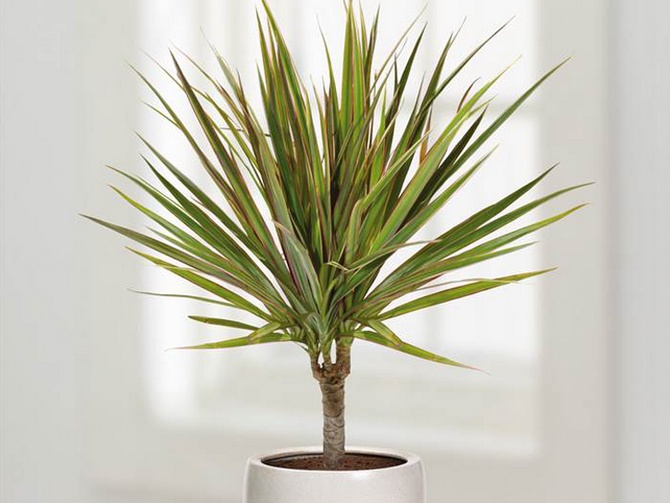
Dracaena prefers well-lit rooms
Perennial varieties with dark green leaves need less light than those with variegated leaves. If the plant does not have enough light, its leaves will change their usual color. It is necessary to monitor this and, when a signal appears, change the conditions for keeping dracaena.
Humidity level and watering regime
All perennial varieties are moisture-loving plants, so they need to be watered a lot and often. In the warm season, which accounts for the phase of active growth of dracaena, watering is carried out three times a week, and with the onset of cold weather, this amount is reduced to 1 time.
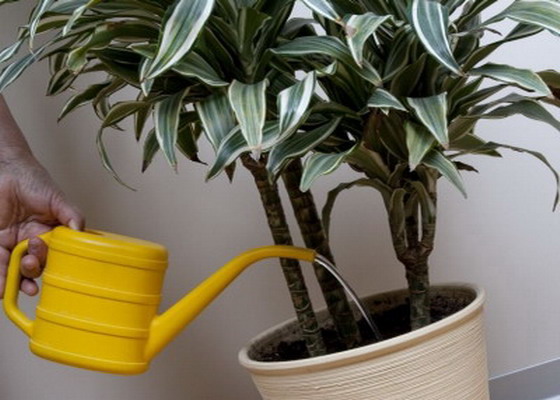
Dracaena needs frequent watering
Leaves are capable of helping to correctly determine how well plants feel. If they began to fall off in large numbers, then they are watered either excessively often, or, on the contrary, too rarely. To prevent this from happening, it is important to strictly follow the schedule, taking into account the time of year, to ensure that the soil is always slightly moist and never dry out. If you water the dracaena in the cold too often, the plant may die. It is useful to regularly spray all varieties of perennial, in the heat you should do this more often - every day.
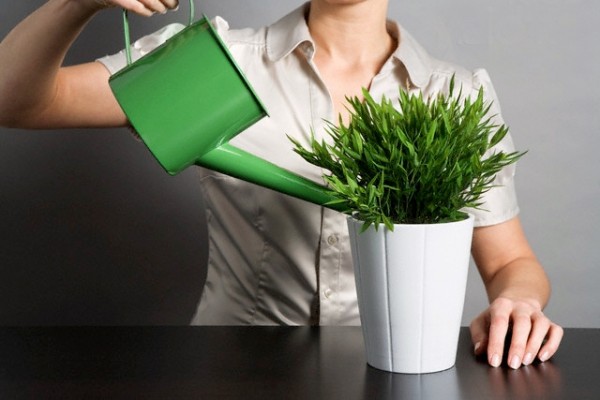
In winter, dracaena is watered once a week.
In addition to moistening the upper part of the plant from a spray bottle, dracaena should periodically take a shower, clean its leaves from dust and dirt accumulated on them. It is necessary to monitor the condition of the leaves - if the tips begin to dry out, then the conditions in the room - the level of humidity - do not suit the flower.
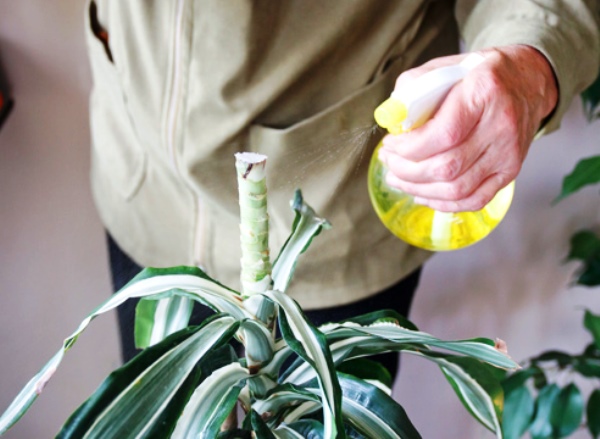
Spray dracaena leaves regularly
Another thing that poses a danger to dracaena is fluorine. It can be contained in running tap water, so you can’t use such water for irrigation - you need filtered water.
Features of summer watering
During this period, you need to moisten the plant once every 2 days, but if the soil dries up for the next watering, then the frequency is increased. For spraying plants from a spray bottle, use heated to room temperature, and not cold water.
Features of winter watering
With the onset of cold weather, the activity of the plant decreases significantly, it falls into hibernation, therefore, during this period, it needs watering once every 3 days. It should be borne in mind that the pots standing on the windowsill (and therefore, near the radiators) need to be moistened more often, since the soil in them dries out faster.You can determine how often a flower should be watered by examining the top soil layer. However, it is important not to overdo it - too much watering at this time of the year can lead to rotting of the plant.
Temperature regime
In the cold season, dracaena is kept indoors, the temperature in which does not fall below 12 ° C, although 15 ° C is considered optimal. When kept in cool rooms, the frequency of watering is reduced - in too cold, moist soil, the roots of the dracaena may begin to rot, which will lead to the complete death of the plant.
In summer, for normal health, she needs a temperature of at least 20 - 25 ° C.

In winter, dracaena is kept indoors with a temperature of 15 degrees.
Lighting
Accustomed to the tropical sun, a plant grown indoors needs very moderate lighting and does not tolerate contact with direct sunlight. The best place for a dracaena pot is on the windowsills of windows facing east or west.
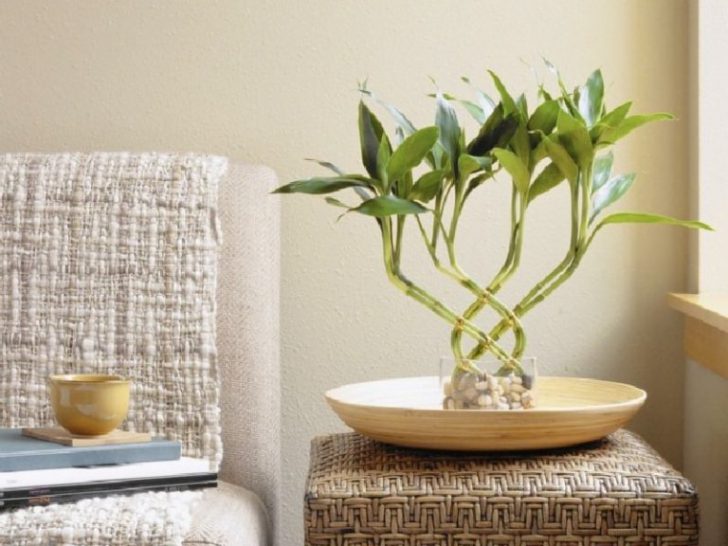
The best place for dracaena is the western windows
In order for the perennial, whose leaves have a variegated color, to retain its spectacular appearance, it is necessary to provide it with more intense lighting, otherwise bright stripes will disappear from the leaves, they will simply turn green. When the daylight hours become short, the dracaena is illuminated by organizing artificial lighting for it.
Soil selection and preparation
The optimal potting mix for this plant is light acidic or neutral. You can use ready-made high-quality soils designed for growing palm trees or deciduous plants, which can be found in a flower shop.
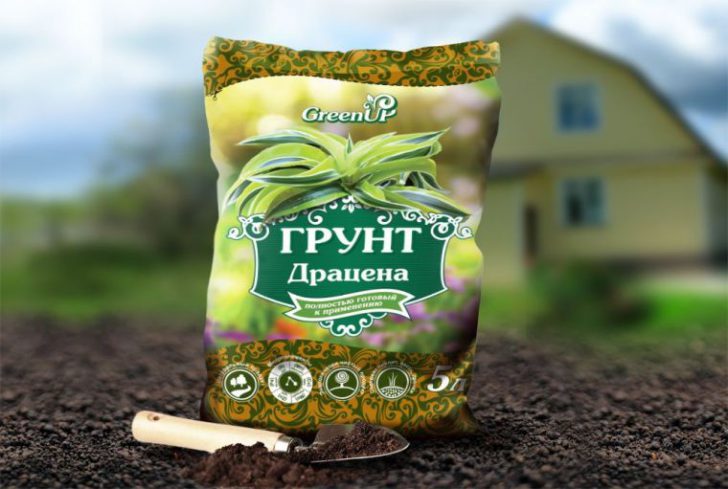
Ready soil for dracaena
Another option is to make your own mixture.
You will need:
- coarse sand;
- sod land;
- peat;
- deciduous soil;
- humus.
All these components are taken in equal amounts and thoroughly mixed.
Another recipe: parts of coarse sand taken in equal proportions are combined with humus and soddy soil.
In any of these compositions, you can additionally add a small amount of coal, and brick chips will act as a baking powder.
Before using do-it-yourself mixtures, they must be thermally processed - bacteria, fungi or pests that can harm the plant can remain active in the ingredients of the soil substrate. The prepared mixture is placed in a preheated oven, calcined, and then cooled.
Plant nutrition
All plants need nutrition, and dracaena is no exception. Fertilizers are applied during the period of active growth of the perennial - from spring to late summer. At this time, you need to feed the flower once a week. With the onset of cold weather, top dressing is reduced to 1 time per month.
Fertilizers suitable for dracaena are those intended for all ornamental and deciduous plants. For varieties with variegated leaves, special ones are required, specifically for variegated plants.
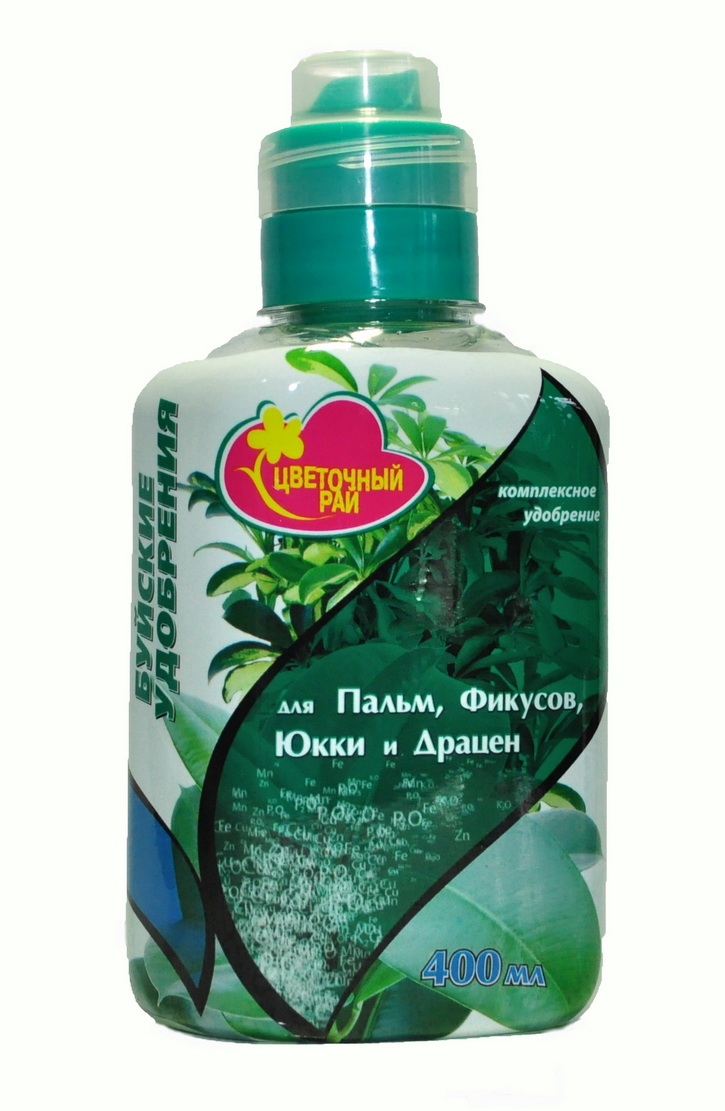
Universal dressing for dracaena
To saturate the upper part of the flower with nutrients, you can use the drug "Doctor Folly Starter" - after its application, the leaves of the perennial will come to life, acquire gloss.
Plants that are planned to be transplanted are fertilized with foliar top dressing; preparations should not be applied to the soil.
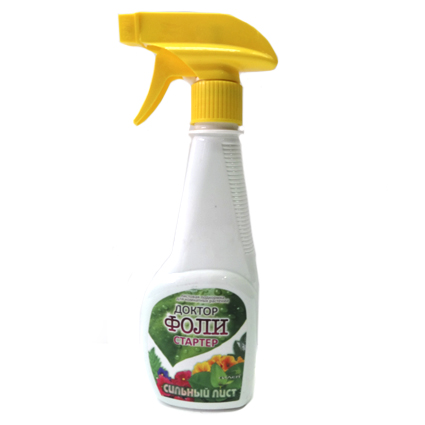
Feeding for dracaena leaves
reproduction
“The most suitable period for reproduction is the beginning and middle of spring, it is at this time that the active growth of a plant that has emerged from hibernation begins”
Perennial propagation is carried out in three ways:
- sowing seeds;
- stem cuttings;
- cutting off shoots.
The seed method is only suitable for propagation of dracaena with green leaves, variegated ones are propagated using the vegetative method. The most suitable period for reproduction is the beginning and middle of spring, it is at this time that the active growth of a plant that has emerged from hibernation begins.
Sowing seeds
The process takes place in three main stages: first, the planting material is prepared, then planted, and then the seedlings are looked after.
Before introducing the seeds into the soil, they are placed for 24 hours in any solution of a growth stimulator, heated to 30 ° C. You can take "Epin", "Zircon" or any other.
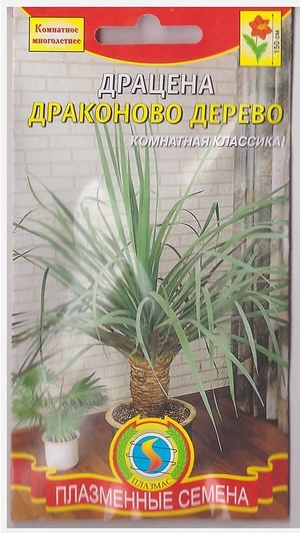
Dracaena seeds
During the time that the material is soaked, containers are prepared in which seeds will be planted. Suitable disposable cups filled with a ready-made mixture for growing palm trees or a substrate made by yourself.
Prepared seeds are placed in the soil, watered with plenty of water, stretched over them with a film to create greenhouse conditions.
It may take 1 - 1.5 months for the seeds to sprout, during which you need to continuously take care of the good lighting of the seedlings and make sure that they are not exposed to direct sunlight. Additionally, you need to regularly moisten the soil, fertilize.
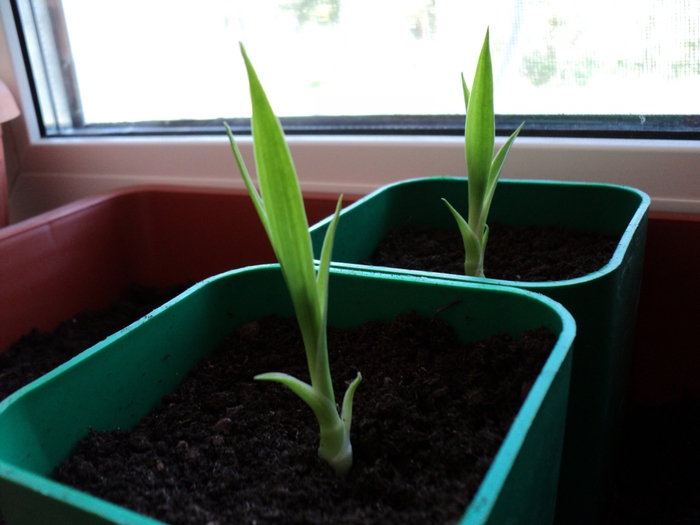
Dracaena sprouts
The first time fertilizers are applied to the soil when the seedlings grow and become stronger. After that, top dressing is continued for 30 days.
After the height of the sprouts is 5 cm, they are planted in individual pots, where they will grow. Further care for seedlings is similar to that needed by adult plants.
cuttings
Perennial propagation using this method is started in the spring. The healthiest large shoots with buds are selected. Divided into 2-3 parts, each should be about 5 cm long, all should have at least 1 kidney. The stem is cut on one side, then placed in a container with soil mixture.
Pots are placed in a warm place that is well lit, but where direct sunlight does not penetrate. Cover the container with foil.
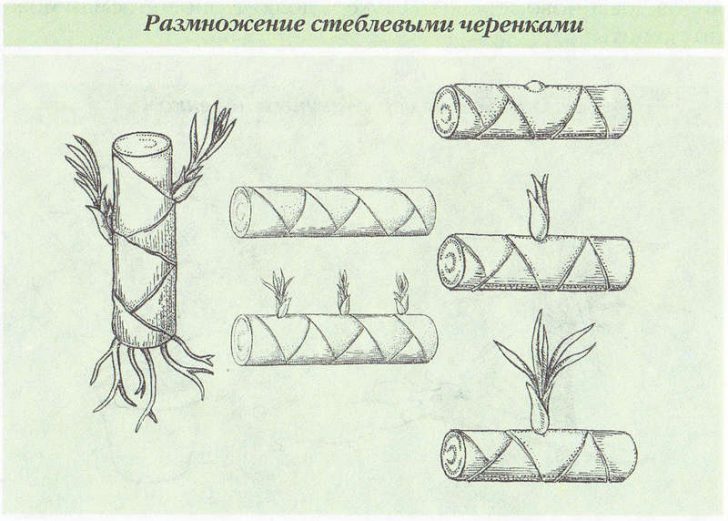
Reproduction of dracaena by shoots
After 1.5 months, young plants will appear. When new branches break through on the planting material, they are moistened with clean water at room temperature.
Another way to propagate dracaena is with the help of layering. The upper shoots of the plant are cut off, placed in a container filled with warm water. So that the layer does not begin to rot, 1 tablet of activated carbon is dissolved in water.
After 1 - 1.5 months, roots appear on the shoots, after which they can be planted in a permanent place.
Shoots from the top of the plant
Using this method, you can quickly and easily propagate perennials.
Using a sharp knife, the top of the stem, on which there are leaves, is separated. The distance from the cut to the leaves should be at least 10 cm. First, the stalk is dried a little, leaving it indoors, then placed in a container filled with water with an activated charcoal tablet dissolved in it. Now you need to wait until the cutting takes root, placing the container in a warm and bright place, but protected from direct sunlight.
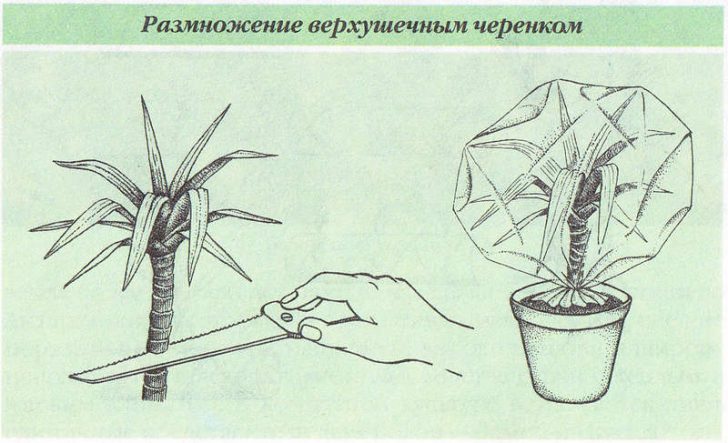
Dracaena cuttings
It is necessary to regularly pour warm, settled water into the container with the handle. After about 2 months, roots will appear, and the plant will be ready for transplanting to a permanent place.
back to index ↑Transplant rules
Transplantation is quite an important event. The root system of the dracaena is powerful and developed, and an insufficiently spacious pot will hinder the growth and development of the perennial. Young plants are transplanted annually, at the very beginning of spring, until active growth begins.
If the plant was purchased in a store, then it is advisable to transplant the dracaena brought home in the near future, since the pot in which it was sold is probably the first and only container in which it grew, and the plant may be cramped in it.
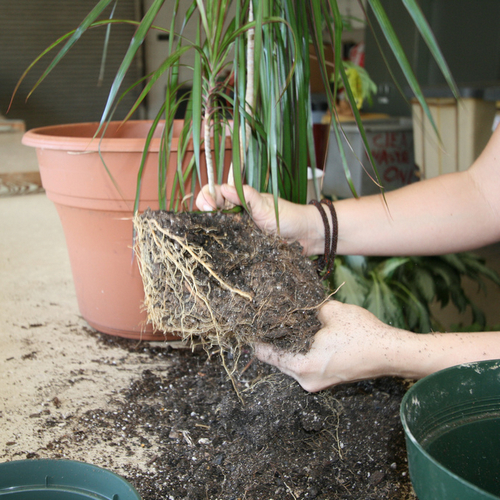
Dracaena transplantation is carried out annually
To check whether a transplant is really necessary, you can use a simple rule: plants whose height has reached 50 cm require containers with a diameter of 15 cm or more. When transplanting, the pot is filled with a special soil mixture intended for growing deciduous plants and palm trees.First, a layer of drainage is poured onto the bottom (expanded clay, for example) so that excessive soil moisture does not cause root rot. When the flower is transplanted, the soil is abundantly moistened, if desired, a growth stimulator is used.

Transplanting dracaena into a larger pot
The perennial does not require special care, however, if you ignore its simple needs and do not monitor the condition of the plant, pests or parasites can start on it, which often leads to the death of the dracaena.
Trimming Rules
The pruning procedure increases the rate of formation of lateral buds of the plant, affects branching. The cut parts of the perennial can be used for propagation.
The optimal period for this procedure is from spring to mid-summer. The plant to be pruned must be at least 30 cm tall.
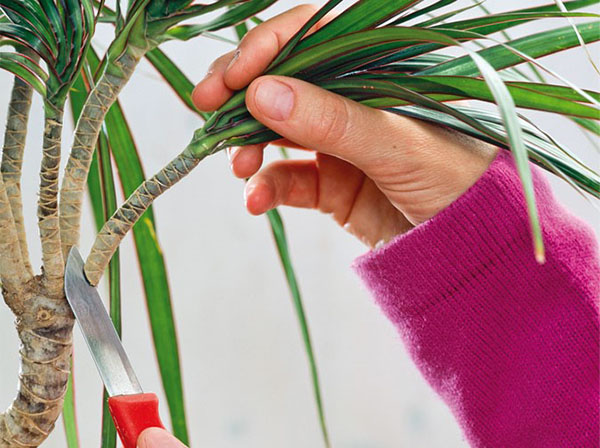
Dracaena pruning can be done from spring to summer
The cut point is chosen so that it is located 5 cm below the last leaves. If the entire stem of the dracaena is covered with leaves, the place is determined independently.
It's important to know:
- The first pruning is carried out only after the plant grows to 30 cm.
- Cut shoots are used to propagate the plant.
- Pruning is an important perennial care procedure - cutting off the trunk, forever determine the height of the plant.
- After pruning, the perennial should be taken to a warm place, the upper shoots should be placed in a glass filled with clean water.
- In order for shoots to appear faster on the cut cutting, they are placed in a well-lit place. It is advisable to place them in greenhouse conditions.
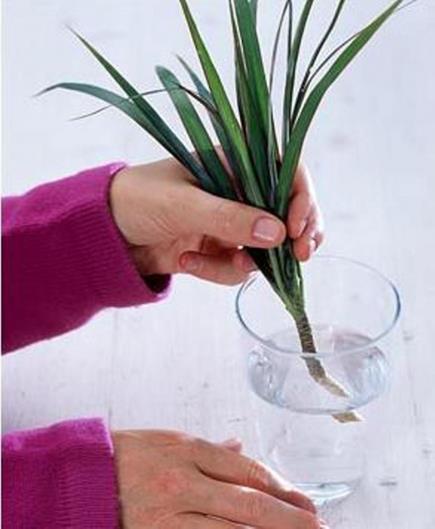
Cut shoots can propagate dracaena
Pruning is a serious procedure, is it worth it? You need to understand that the trimmed trunk will be exactly the height that is determined during trimming.
For the procedure you will need:
- sharpened knife;
- the drug "Zircon" (you can do without it);
- activated charcoal tablet.
The stem in the chosen place is cut using a prepared knife. At the same time, they act so that the rest of the part does not break. When the process is completed, the cut point is first sprinkled with crushed activated carbon, and then treated with Zircon. Transfer the pot to a warm, well-lit place.
The cut part of the plant is placed in a glass of warm water. They put it next to the pot or place it in a greenhouse with high humidity - in this case, new shoots will appear earlier.
Problems that may arise when growing perennials
The most common complaint of flower growers regarding dracaena is its death in the winter. In order for the plant to feel good, it is important to provide it with good conditions. It does not tolerate drafts and cold, so it is not recommended to leave it on the windowsill after the arrival of the first frost.
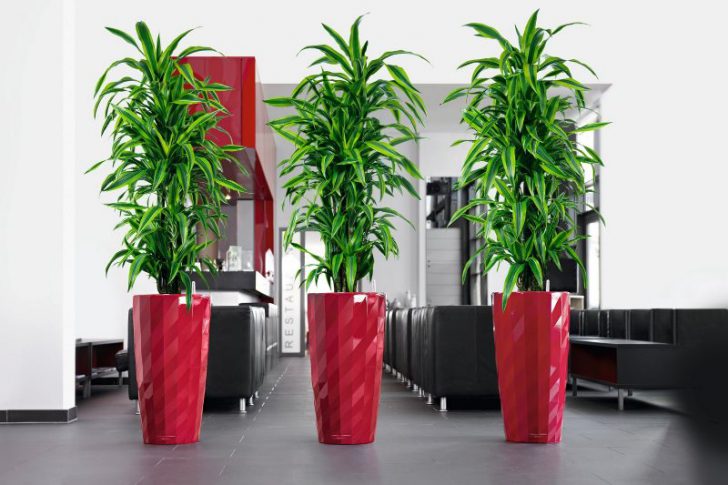
Dracaena does not tolerate drafts and cold
Also, you should not often or abundantly water the plant, fertilize the soil. In cold weather, moisture begins to provoke freezing of the soil, this threatens with hypothermia of the roots, and leads to the death of the perennial.
The first sign of a deterioration in the condition of the dracaena is an intense loss of leaves. At first they begin to turn yellow, a brown border forms along the edges. After they curl up, and only then begin to fall off. At this time, the root system is already rotting due to the abundance of water in the soil.
The process of treating a plant is determined by the degree of damage: if only the leaves have suffered, it can be saved. To do this, the pot is moved to a warm place and reduce the intensity of watering. Periodically, the upper part of the dracaena is sprayed. After the dead leaves are completely dry, they are carefully cut off. In early spring, the dracaena is transplanted into another container.
If the perennial trunk has become soft and wrinkled
The softening of the trunk also indicates that the plant has begun to rot. To save the dracaena, you should disinfect a sharp knife, and then cut off all the damaged parts of the trunk with it.It may be necessary to remove all the stems - even in this case, if everything is done correctly, young shoots will appear from the roots.
If the leaves begin to fall off, then the problem is in the roots. In this case, a plant transplant will be required, during which the root system is carefully examined and dried so that it does not start to rot.
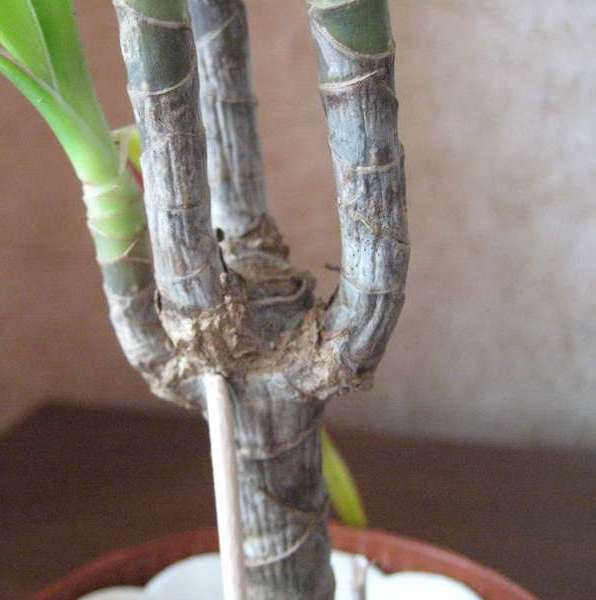
The trunk of the dracaena wrinkled and became soft
If brown edges appear on the tips or edges of the leaves of the plant
A similar symptom indicates that the humidity level in the room is not suitable for the dracaena, it must be increased. To do this, 2 methods are used: the pot is placed on expanded clay poured into a container of water, or a wide-mouthed container filled with water is placed around the plant.
Another possible reason for this phenomenon is insufficient watering or drafts.
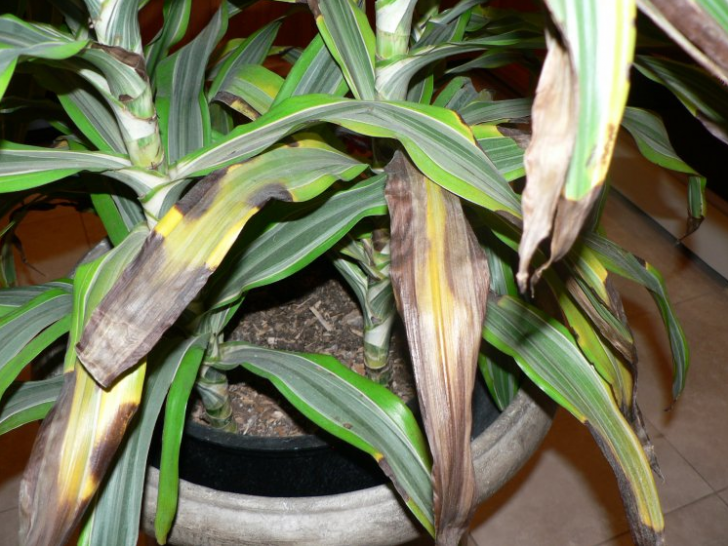
Brown edge on dracaena leaves
If brown spots appear on the leaves
The most common reason in this case is rare watering, which causes the root system to dry out. To fix this, you do not need to drastically increase the amount of water and the frequency of soil moisture - you must strictly follow the irrigation regime, because too much liquid in the soil can lead to root rot.
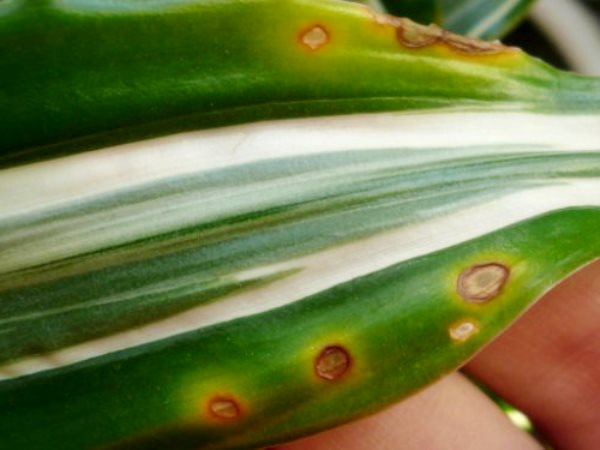
Brown spots on dracaena leaves
Leaf softening and curling
This problem can be caused by too cold air in the room. You need to move the pot to a warmer room.
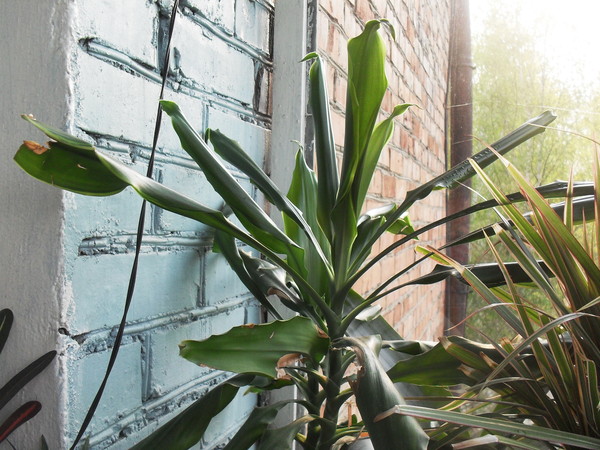
Twisting dracaena leaves
yellowing on lower leaves
This is considered normal - the lower old leaves die off, and therefore turn yellow.

The lower leaves of the dracaena turn yellow
Dry light patches on leaves
The light spots that appear are traces of sunburn of the plant. Do not leave it in direct sunlight.
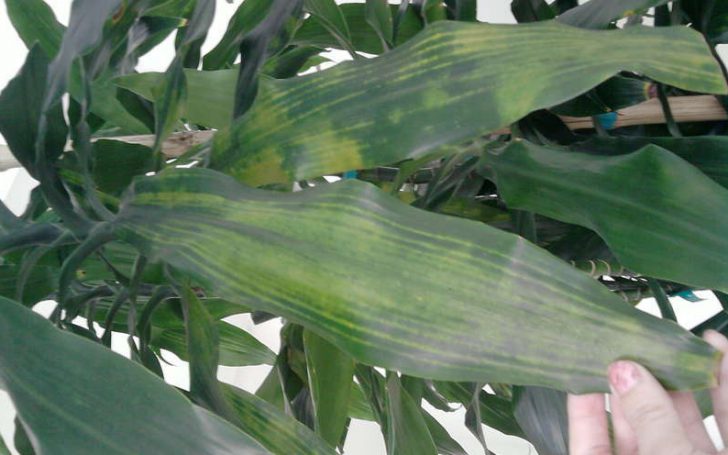
Light patches on dracaena leaves
Rules for choosing a quality plant
When buying dracaena in a store, you should refuse plants that have:
- brown or translucent young leaves;
- drooping crown of the trunk;
- wrinkled trunk;
- rotting roots.
Also, do not take a plant from which an unpleasant smell of rot and mold emanates.
Diseases and pests
Dracaena is a very undemanding plant, but if you do not provide it with proper care, parasites can start on it that can lead to the death of a flower.
The most dangerous and common pests for this perennial:
- spider mite;
- scab;
- thrips.
The scale insect can cause the most serious damage to the plant. This disease affects the leaves and stems of perennials, slowing down their growth. The leaves turn yellow at the same time, and if this symptom is left unattended, the plant will soon be beyond saving.
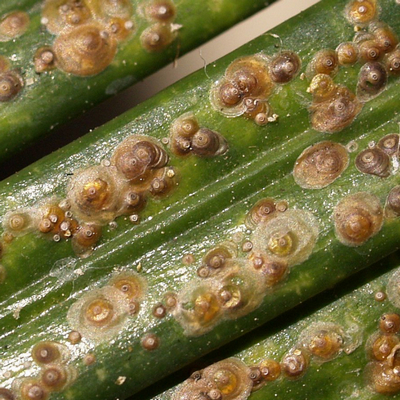
Shield on dracaena
To get rid of scale insects in the initial stages, you need to thoroughly wash the leaves with soapy water with the addition of vodka. For plants that are more affected, a special drug (Actellik) will be required.
Spider mite can occur on perennials if the plant is kept in a room with a low level of humidity. Signs of this disease: drying and yellowing leaves. To overcome the disease, the upper part of the plant is sprayed with water, and if the disease has gone far, chemical agents such as Fitover are used.
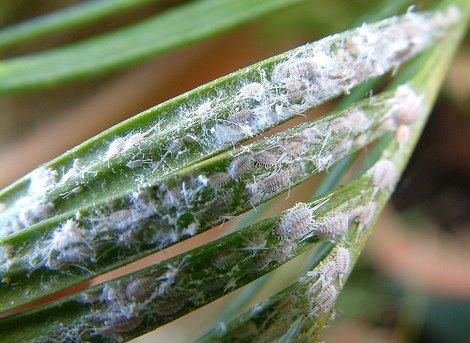
Spider mite on dracaena leaves
Thrips are small black insects, after the appearance of which silver stains remain on the leaves of the plant. In this case, the plant begins to grow much more slowly. You can get rid of them by washing all the leaves of the flower with soapy water and placing special insect traps.
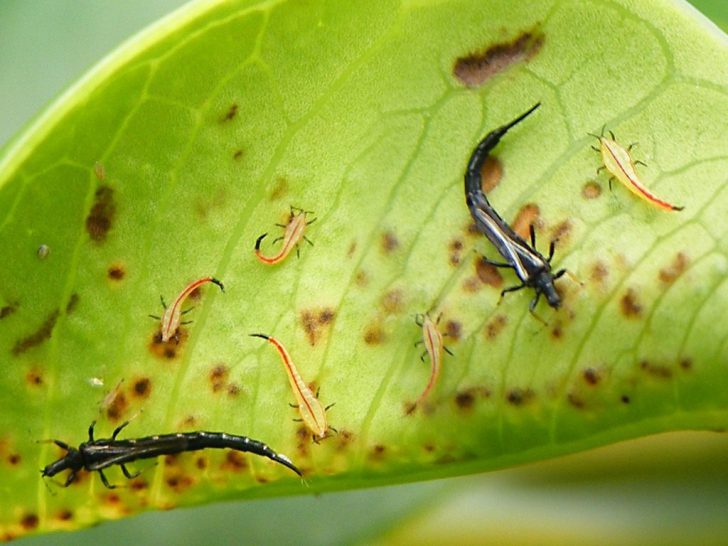
Dracaena affected by thrips
Conclusion
What you need to know so that the dracaena does not get sick, actively develops, and shiny, brightly colored leaves appear on it:
- Watering should be frequent, but you do not need to use a lot of water.
- Avoid direct contact of the plant with the sun's rays, but put it in a well-lit place.
- Monitor the growth of the perennial, if necessary, transplant it into a more spacious pot.
- Spray the leaves regularly with clean, warm water.
- Do not leave dracaena in a draft.
- Control the humidity of the air, increase it if necessary.
If you follow these simple rules, you can grow a tall and lush plant that will decorate any room.
back to index ↑Photo gallery - dracaena
Video

